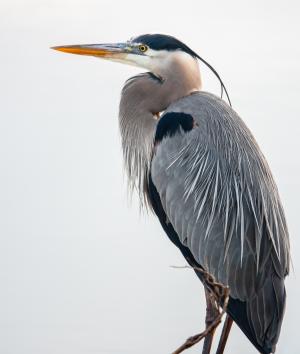NRCS State Watershed Program Managers
Contact your local NRCS Watershed Program manager for assistance:

The Watershed Protection and Flood Prevention Operations (WFPO) Program helps units of federal, state, local and federally recognized tribal governments (project sponsors) protect and restore watersheds.

Caldwell County, Missouri
The reservoir will provide a source of drinking water to communities in Caldwell County (pop. 9,424) and surrounding areas, providing flood control along with recreational opportunities such as fishing, hunting, camping, hiking, biking, and wildlife habitat. The 345-acre reservoir will supply 1.24 million gallons of drinking water per day.
Construction Phase - Construction will be completed in the Spring 2025.

The WFPO program provides technical and financial assistance to States, local governments and Tribal organizations to help plan and implement authorized watershed projects for the purpose of:

- Public sponsorship
- Watershed Projects ≤ 250,000 acres
- Agricultural benefits, including rural communities, must be ≥ 20% of the total benefits for the project.

Watershed conservation projects are planned and carried out jointly by local, state, and federal agencies with the support of community landowners and citizens in the watershed. Communities identify resource problems to be addressed, practices to be installed, and carry out major portions of a watershed plan, such as obtaining easements, rights of ways, permits and local cost-share funding. All Watershed Program projects must have a local sponsor that can act as the fiscal agent, provide project management and oversight throughout the different phases of construction, implementation, and project lifespan. Learn more about sponsor eligibility...
Project sponsors initiate a request for assistance thru their local NRCS office to develop a preliminary feasibility study (PIFR) which helps communities consider sustainable solutions to address watershed resource concerns. After a feasibility study is conducted, a watershed plan is chosen, reviewed, approved and authorized. Once authorized, projects sponsors gain access to NRCS's financial and technical resources to help implement their plan. An approved watershed plan must be in place prior to initiation of any corrective land treatment or structural solutions. Project sponsors then help landowners carry out the authorized watershed conservation measures.
Program governance - Public Law 83-566
Discover the incredible work WFPO performs across the nation
Bringing the landscape together: Local community goals and watershed scale planning solutions. The National Water Management Center (NWMC), located in Little Rock, Arkansas, serves as a focal point for water resources information exchange.
Learn MoreContact your local service center to start your application.
Do you farm or ranch and want to make improvements to the land that you own or lease?
Natural Resources Conservation Service offers technical and financial assistance to help farmers, ranchers and forest landowners.

To get started with NRCS, we recommend you stop by your local NRCS field office. We’ll discuss your vision for your land.
NRCS provides landowners with free technical assistance, or advice, for their land. Common technical assistance includes: resource assessment, practice design and resource monitoring. Your conservation planner will help you determine if financial assistance is right for you.
We’ll walk you through the application process. To get started on applying for financial assistance, we’ll work with you:
Once complete, we’ll work with you on the application, or CPA 1200.
Applications for most programs are accepted on a continuous basis, but they’re considered for funding in different ranking periods. Be sure to ask your local NRCS district conservationist about the deadline for the ranking period to ensure you turn in your application in time.
As part of the application process, we’ll check to see if you are eligible. To do this, you’ll need to bring:
If you don’t have a farm number, you can get one from USDA’s Farm Service Agency. Typically, the local FSA office is located in the same building as the local NRCS office. You only need a farm number if you’re interested in financial assistance.
NRCS will take a look at the applications and rank them according to local resource concerns, the amount of conservation benefits the work will provide and the needs of applicants. View Application Ranking Dates by State.
If you’re selected, you can choose whether to sign the contract for the work to be done.
Once you sign the contract, you’ll be provided standards and specifications for completing the practice or practices, and then you will have a specified amount of time to implement. Once the work is implemented and inspected, you’ll be paid the rate of compensation for the work if it meets NRCS standards and specifications.